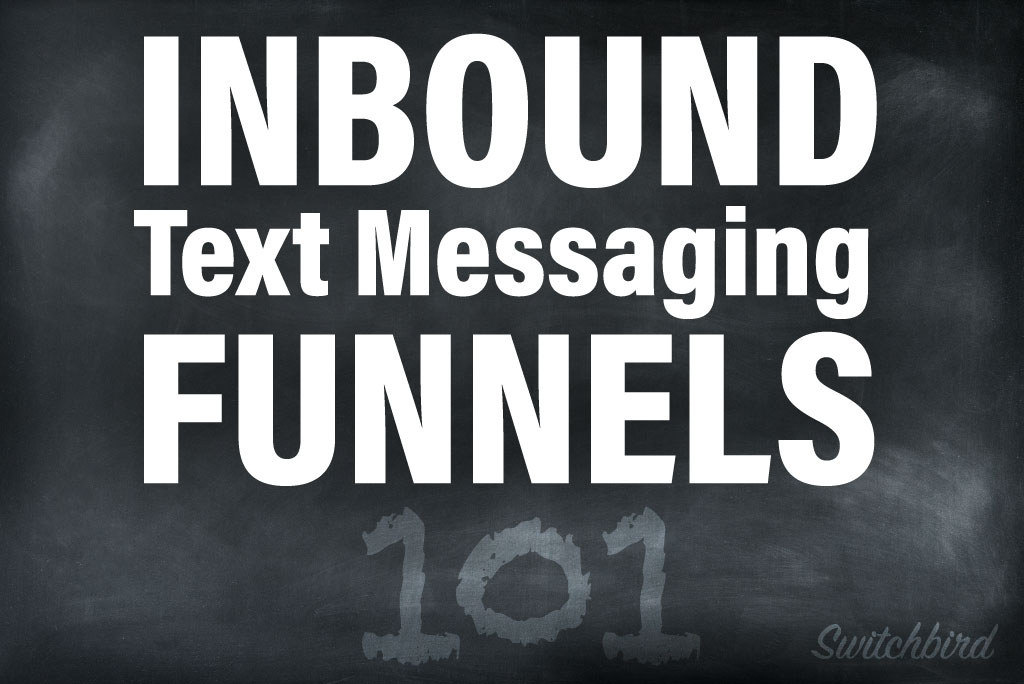
Are you a small business seeking a channel you can control? Online seller tired of chats with anonymous users you can never follow up with? Digital agency that wants to provide their client with new tactics to attract and win customers?
Text messaging isn’t exactly a new technology, but with overfilled inboxes and too much social media, plain old texting remains an incredibly popular. More importantly, it’s a medium people pay attention to (98% open rates!), and associate with a more personal experience. Not to mention the convenience factor.
Using text messaging to its full capabilities is something everyone selling or providing a service needs to do in 2021.
But how?!
Here’s a simple rundown for the best ways to use text messaging in order to attract, engage, and follow up with your prospects whether you’re a small business, a franchise, a digital agency or enterprise–or anything in between.
Inbound vs. Outbound Texting
If you’re already familiar with Hubspot or inbound marketing then you’re one step ahead, as inbound texting works much the same as other inbound rather than outbound marketing.
Outbound texting is any messaging that you initiate to the prospective customer. Most consumers have had negative experiences with outbound texting. Either it consists of borderline spammy marketing messages (yet another “huge” promotion just for me?) or it’s truly spam: cold sales pitches from companies the consumer doesn’t even know.
Inbound texting isn’t used as often, and it’s rarely used as creatively or effectively as it could be. Many of us have seen or participated in inbound text keyword campaigns like “Text 50OFF to 55555” to get a coupon from a retail store via SMS. Or maybe you’ve been moved to vote for your favorite American Idol contestant by inbound text? No judgement.
Inbound texting is any texting that a customer or prospective customer initiates.
And the benefits of inbound texting are multiple.
Benefits of Inbound Texting
The primary benefit of inbound texting is the ability to engage with prospects on their terms and in a responsive and personal way, a sure way to win their loyalty. Add to that the the fact that inbound conversations imply buying intent, allowing your business to focus on the conversations most likely to yield customers. Finally, by empowering prospects to text your business, you cast a wider net.
Beyond these immediate benefits of inbound texting are the residual benifits: a durable contact that your business can use to follow up, re-market to, and ultimately generate more value from these leads and customers long-term. Think: email list on steroids.
Contrast that with web chat where you might have a great initial conversation, or have an interested buyer you just missed but who never left their contact info. Now you can likely never get back in touch with them. Clearly, if you’re going to emphasize one channel or medium, inbound texting wins.
How to Inbound Text
It’s possible to initiate inbound texting anywhere you can connect someone’s phone to your phone number.
A few great ways are:
- Prompting callers to text rather than leave voicemail
- Add a click-to-text SMS chat widget to your website that move the chat to a text conversation
- Specifying a phone number on your signature or website is textable with a “Text Me” or “Text Us”
Though the reality is how a prospect gets to you isn’t as important as what their experience is once you have their attention.
The key to a great inbound texting experience is being responsive. And being responsive requires intelligent automation.
Intelligent Text Automation
Let’s face it, (most) people prefer speaking and interacting with people rather than bots. Though doing so can be highly impractical in many cases, not to mention expensive for businesses.
So it’s important to look at the reasons why bots are often looked down upon, and develop automation that tries to do the opposite.
The key reasons for bot failures seem to be:
- Lack of personalization
- Limited options
- Perception no one is listening
- Feeling “tricked” into interacting with bot
- Wasting time on circular logic that doesn’t answer key question
We can address these shortcomings with more intelligent automated text funnels, but it’s important to acknowledge what can and can’t be done with automation.
Bots are still not Turing complete. Don’t try to pretend a real person is answering as it will not only fail, it is actually illegal in some jurisdictions. Also, don’t attempt to create a bot that answers all questions for all people. You’ll drive yourself crazy, and your bot is guaranteed to be outwitted by a customer regardless.
Instead, consider these principles for creating an effective texting automation:
- Acknowledge that you’re leveraging automation in a fun/witty way
- Add some personalization if it’s possible
- Leverage the medium with simple answers (i.e. 1 or 2, Y or N, Yes or No)
- Build in redundancies for wrong answers (i.e. please choose 1 or 2 only if word is entered)
- Create limited options as a feature rather than a bug
- Give a way out to leave a message for a real person
Take a look at some of the automated text funnel examples built with Switchbird to get some ideas and concrete examples of how these principles work.
Conclusion
Text messaging remains an incredibly effective medium to communicate with your prospective or existing customers. It’s also a channel that you can own completely without having to pay a royalty to Big Tech–or risk its disappearance completely.
By understanding the medium, and leveraging automation you can take your marketing and business development game to the next level.
To get started, you can claim your free account here, or connect with us for a full demo of Switchbird
